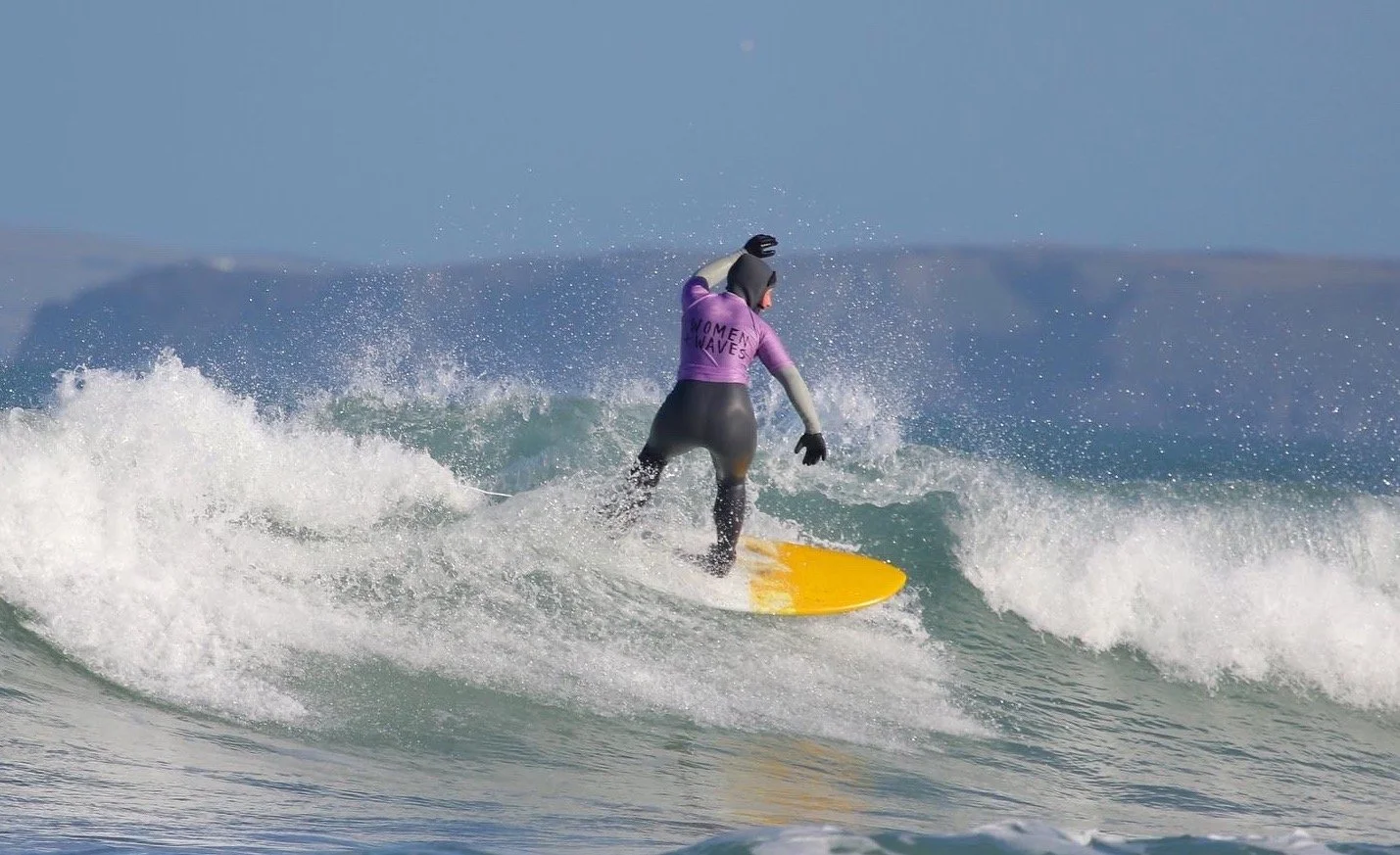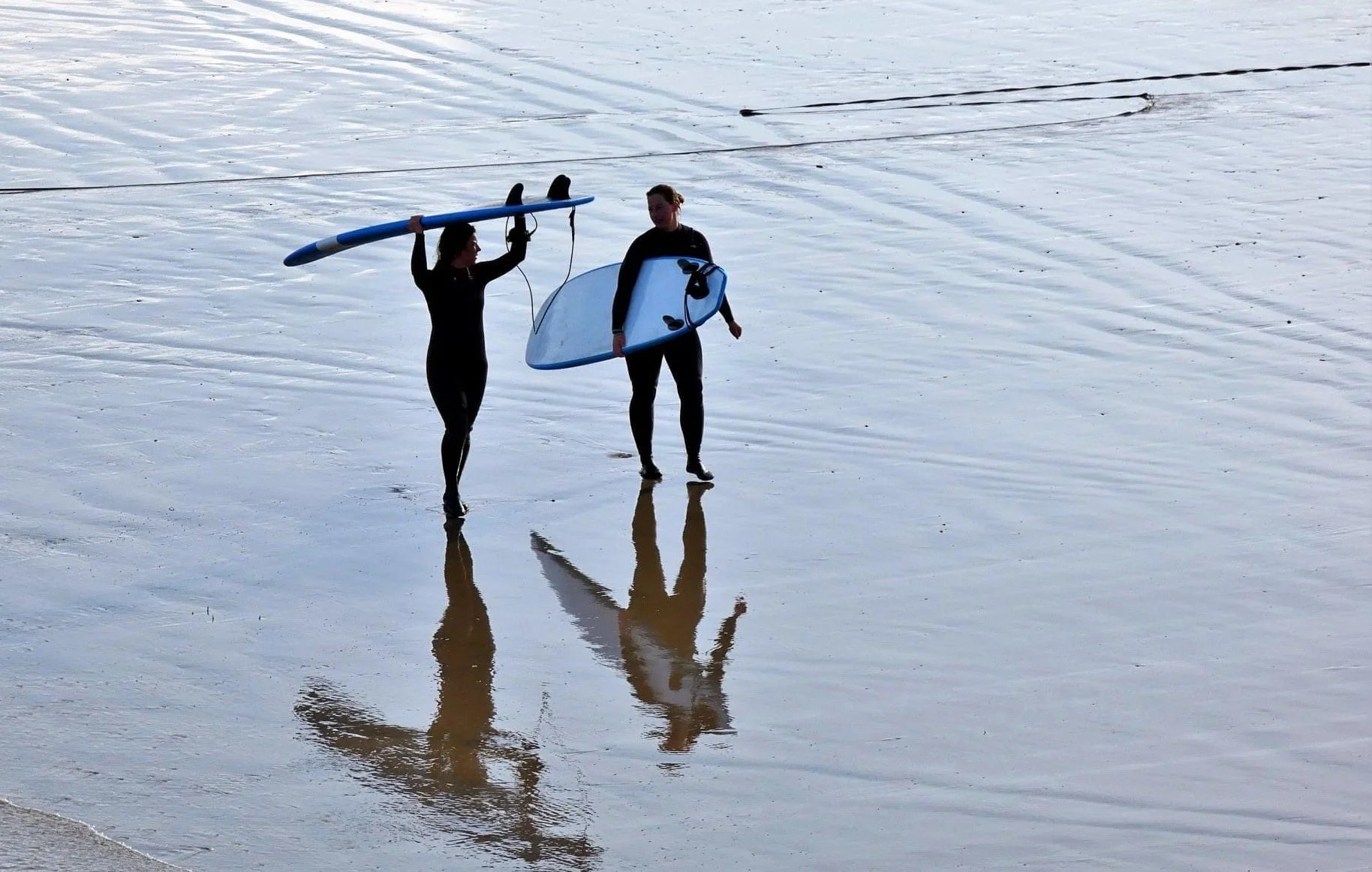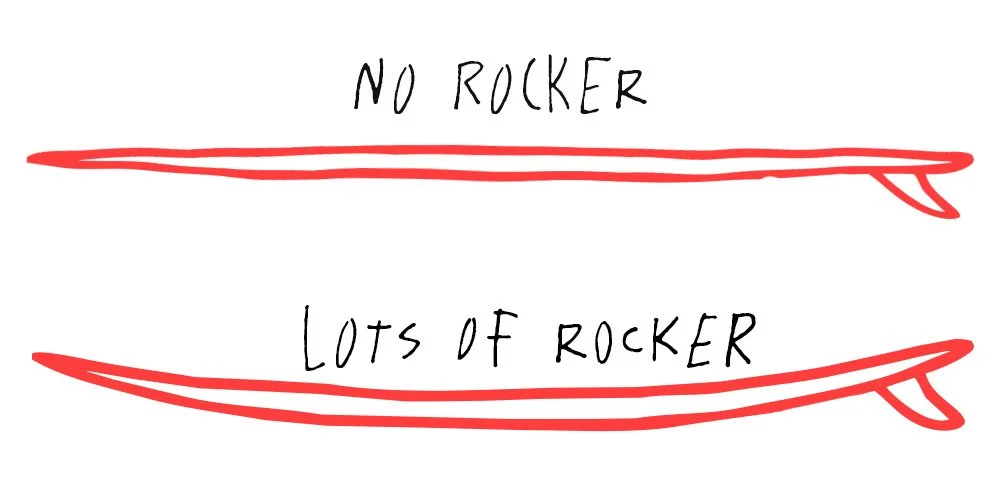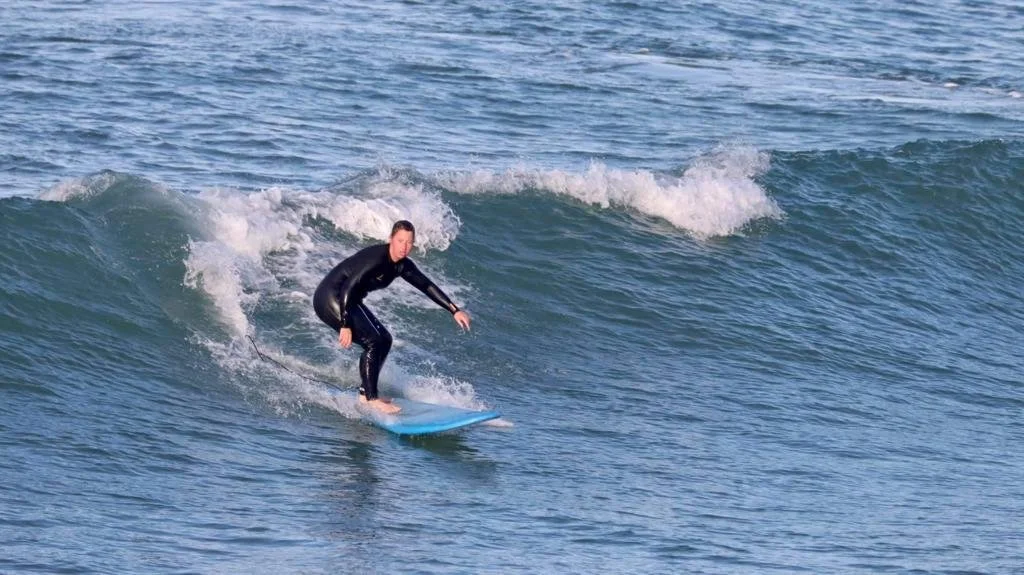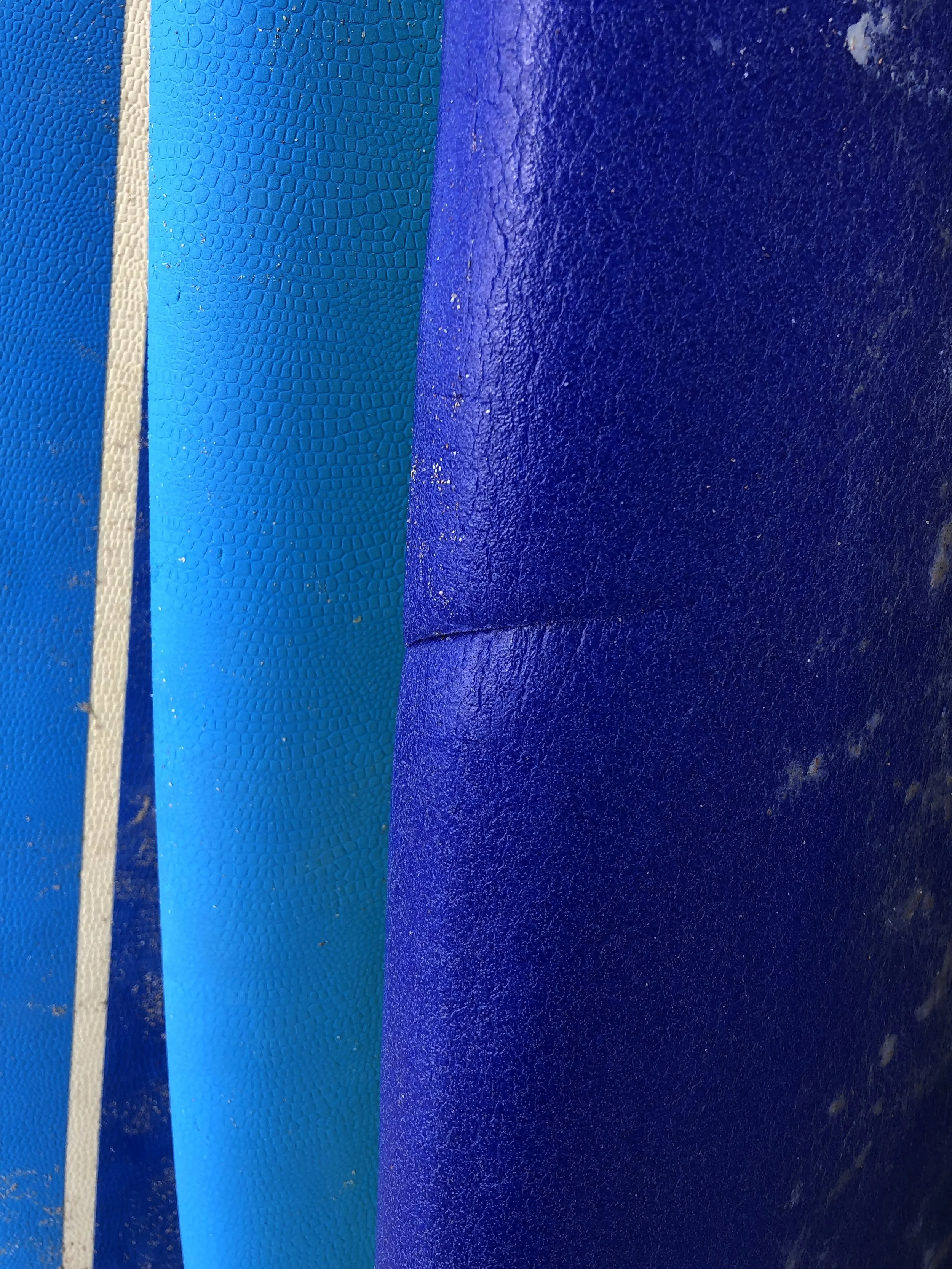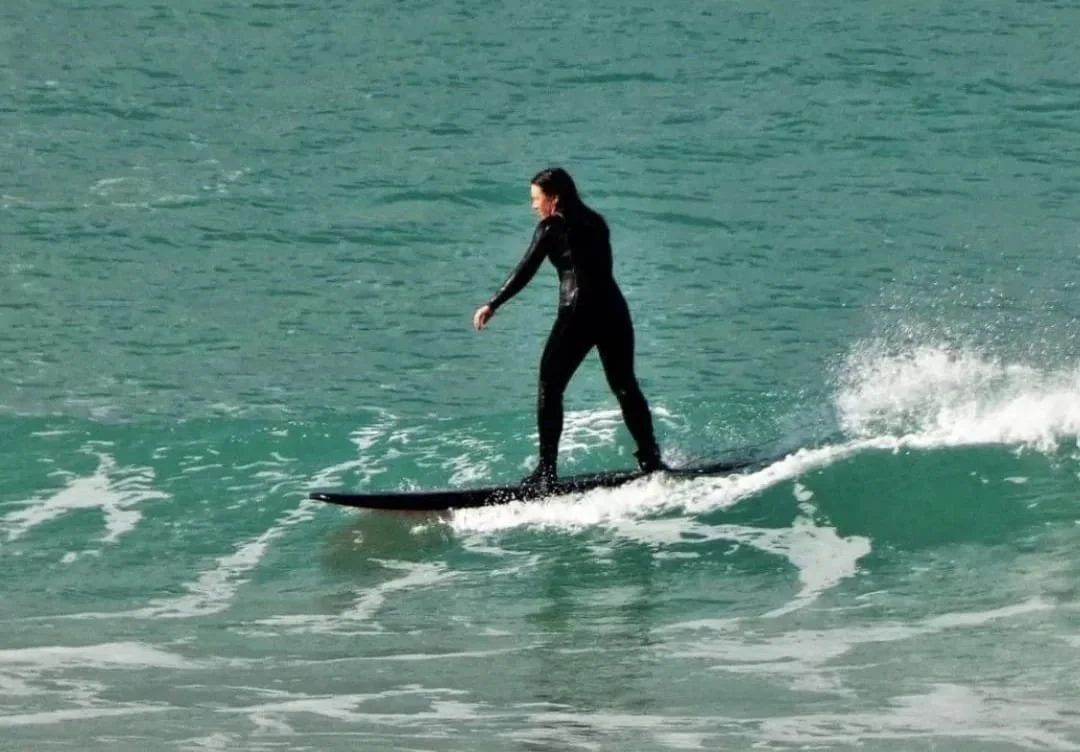Time to move on from your foamie?
Let our surf coach and board shaper/designer, Max, talk you through the process..
‘I must have seen thousands of people riding foamies during my time teaching surfing at Cornish beaches, I’ve also surfed pretty much every size, shape and design of soft boards that is on offer to the new and aspiring surfers we have down here in Newquay’
Soft board recipe
Foam surfboards, foamies, foamys… soft boards, swellys - whatever you want to call them, in order to understand the right time to change for a hard board, let’s understand what makes the foam board:
Stringerless ‘foam’ core (think of high density packaging foam)
Tough ‘skin’ that is glued around the core
Plastic fins that plug through the deck
The other option, aiming to be the best of both worlds, is a hard epoxy board which is covered in a thin foam layer. Think of it as wrapping a standard hardboard in a yoga mat..namaste? We will come to the disadvantages of this later.
Go big or go foam
When riding your first few waves, navigating between your fellow beginners with little control - there is no doubt a foam board is best. But for how long do you stick with it? Understanding the foamie’s pros and cons will help you to make an informed decision.
Pro - Easy to stand up on, and ride in a straight line
Con - Difficult to manoeuvre
At the start of your surfing career the main goal is standing up, staying on the board and riding the broken wave for as long as possible.
Surf school foam boards are thick and floaty, wide all over, flat rockered, and generally have square tails.
Thick, high volume surfboards will put you high and dry out of the water. Volume spread out all over the board is going to give you the balance and confidence to stand up without needing to quickly get your feet into the right position.
The width can be up to 25inches at it’s widest point - this is great for general balance but think of it like a barge ship when trying to lean over and turn.
Flat ‘rocker’ - the tip to tail curve when the board is laid flat on the sand makes for easy paddling in small waves - unfortunately you don’t always get perfect small waves when you are learning, notice yourself nose diving a lot in bigger conditions? Yep, that’s why.
Square, wide tails are also a stability thing. To turn a surfboard quickly you need to sink some of the tail and engage the rails. A common problem in beginner surfers is a heavily weighted back foot, a wide platform at the back of the board is an easy fix to stop surfers doing a bicycle wheelie on every wave.
Remember the first pic? Here’s Jo turning a foamie before she learnt to rip on her 6’6 Scrambled Egg
In short - everything that makes a surfboard easy for the first timer to stand up on and get the sensation of riding a wave, will make it harder to turn once you have mastered the basic pop up.
Pro - Cheap + Robust
Con - Construction limits progression
Soft, hard to break boards lead to an equally soft and uninspiring ride, older foamies can literally be flexing like a loose trampoline under your feet when you ride. To get the most glide and manoeuvrability from a surfboard you need to increase the responsivity of all the materials.
What makes a foamie (and often epoxy boards like those of Bic and Torq) so cheap is the plastic content and mass produced factory construction. Glued together by large machines, there is almost no chance of creating a shape for the all important rails.
Deck material is glued together at a uniformed point, with the same sharp edge from top to bottom, nose to tail, causing the board to either track straight along a wave face, or dig in to make sharp and hard to control turns.
Cheap and robust fins that plug through the board are a great idea when you are unconsciously riding into the sand, once up and turning on white water or green waves, these small plastic fins are bending and losing grip when they should be holding you across the wave.
Coming back to our yoga mat constructed boards, it is very hard to spot when the core is damaged and even harder to fix them. Large impacts aka ‘dings’, will cause layers in the material to separate, allowing air and eventually water to seep in - on foam surfboards there is no obvious crack in the board to show you this.
The damaged top layer reveals the epoxy core underneath, luckily this time there is no damage to the hard casing
Notice a ‘fin-jury’ on your foamie? Might be why it’s getting heavier each surf
Got foamo?
By now you might be reflecting on your last few surfs. Your 8ft foamie has left a puddle of sea water on your carpet floor, your surf coach had never seen someone nose dive so much before in a two hour session... but…
If you can stand up more often than not, riding white water and small green waves, steering left and right without crashing into (too many) people…
It’s time to take your surfing to the next level!
Hands down, time to move onto a hard board
The general advice from the world wide web is to start on an 8ft foamie, what happens from there… try search the internet for ‘what surfboard should I buy’ - after hours spent and pages scanned you come out knowing a lot of useless jargon, generalised advice and what board some insta blogger has been paid to say worked for them in Bali that one time.
By all means do all this, search, research and gain more knowledge.
And or, speak directly to our friendly shaper about your first, or second, hardboard.

